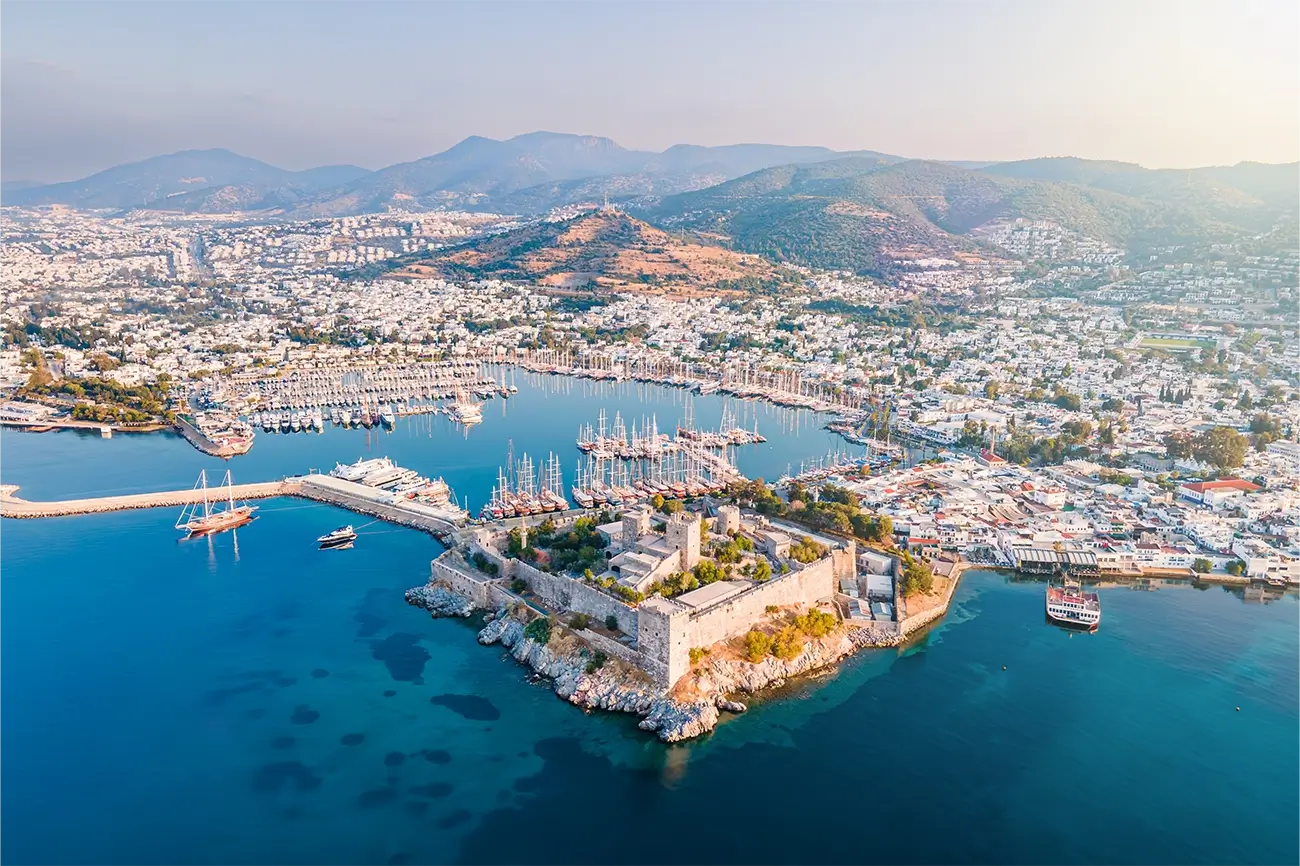
13 Nov. BODRUM
Laut Herodot, der als „Vater der Geschichte“ bekannt ist, wurde Bodrum von den Dorern gegründet. Später ließen sich die Karer und die Leleger in dieser Region nieder. Im Jahr 650 v. Chr. kamen die Megarer in die Region, erweiterten die Stadt und änderten ihren Namen in „Halikarnassos“. Im Jahr 386 v. Chr. kam Bodrum unter die Herrschaft der Perser. Halikarnassos erlebte seine Blütezeit im Jahr 353 v. Chr., als es die Hauptstadt der Region Karien wurde. In dieser Zeit wurde das Mausoleum, eines der weltberühmten sieben Weltwunder, zu Ehren von König Mausolus von seiner Schwester und Ehefrau Artemisia errichtet.
Im Jahr 192 v. Chr. wurde Bodrum unter die Schirmherrschaft der Römer gestellt, entwickelte sich aber in dieser Zeit nicht wesentlich weiter. Im Jahr 395 n. Chr. kam die Stadt unter die Herrschaft der Byzantiner, im XI. Jahrhundert unter die der Türken, während der ersten Kreuzzüge wieder unter die der Byzantiner und im XIV. Im Jahr 1407 kam Bodrum unter die Schirmherrschaft der Ritter von Rhodos und wurde 1523 während der Herrschaft von Suleiman dem Prächtigen dem Osmanischen Reich aufgenommen. Nach der Ausrufung der Republik wurde die Stadt in „Bodrum“ umbenannt.
WICHTIGE HISTORISCHE UND ARCHÄOLOGISCHE DESTINATIONEN
Burg von Bodrum und Archäologisches Unterwassermuseum
Die Burg von Bodrum ist ein historisches Gebäude, das 1407 von den Johanniterrittern (Ritter von Saint John) erbaut wurde. Die Burg, die während des Osmanischen Reiches als Militärstützpunkt und Gefängnis diente, wurde 1964 als „Bodrum-Museum“ für Besucher geöffnet und 1981 in „Archäologisches Unterwassermuseum Bodrum“ umbenannt.Dieses Museum, das in der Türkei eine Premiere im Bereich der Unterwasserarchäologie darstellt, ist eines der wenigen Beispiele weltweit. Die Burg von Bodrum ist mit ihrer herrlichen Aussicht und ihrer historischen und architektonischen Bedeutung nach wie vor ein Anziehungspunkt für einheimische und ausländische Touristen.
Bodrum Mausoleum
Das Mausoleum von Halikarnassos (oder Mausoleum) wurde in Halikarnassos von seiner Frau und Schwester Artemisia zum Gedenken an König Mausolus errichtet und gilt als eines der sieben Weltwunder. Dieses große Grabmal zeichnet sich durch die Säulen der griechischen Architektur und das pyramidenförmige Dach der ägyptischen Architektur aus. Aufgrund der Bedeutung dieses Monuments ist der Begriff Mausoleum zu einer allgemeinen Bezeichnung für alle später errichteten ähnlichen Monumentalgräber geworden. Mausolos Satrap (in Persen bedeuten Provinzgouverneur) von Karien, begann wahrscheinlich 355 v. Chr. mit dem Bau des Mausoleums. Nach seinem Tod (353 v. Chr.) setzten seine Frau und seine Schwester Artemisia den Bau fort; nach dem Tod von Artemisia (351 v. Chr.) führten Mausolos' andere Geschwister die Arbeiten fort. Es wird vermutet, dass der Bau um 340 v. Chr. während des Satrapenstreits zwischen Paxodaros und Ada unterbrochen wurde.
Das Antike Theater
Das antike Theater von Bodrum ist eines der wichtigsten archäologischen Überreste aus der hellenistischen Zeit und stellt einen wichtigen Teil des historischen Erbes von Bodrum dar. Dieses Theater, das eine beeindruckende Kapazität von etwa 13.000 Menschen hat, besteht aus drei Hauptkomponenten: Bühne, Orchester und Sitzbereich.
Mindos-Tor
Das Mindos-Tor, eines der beiden Haupteingangstore von Halikarnassos, befindet sich im westlichen Teil von Bodrum. Dieses Tor ist der Punkt, an dem die zur Hauptstadt führende Straße die heutige Stadt Mindos erreicht. Nur die Mauerreste sind bis heute erhalten geblieben. Alexander der Große betrat die Stadt durch dieses Tor, um Halikarnassos im Jahr 333 v. Chr. zu belagern. Alexander, der in der Stadt auf einen sehr schwierigen Widerstand stieß, eroberte schließlich Halikarnassos, zerstörte aber alle Gebäude außer dem Mausoleum.
Osmanische Schiffswerft
Die Osmanische Schiffswerft befindet sich nordwestlich des Hafens von Bodrum, westlich der Karada Marina. Heute befindet sich hinter der alten Werft ein osmanischer Friedhof mit den Mausoleen von Cafer Pascha, einem namenlosen Reiter und osmanischen Seefahrer.
Die Gründung der Bodrum-Werft wird auf das Jahr 1115 geschätzt. Archivdokumenten zufolge wurde das erste in Bodrum gebaute Schiff im Jahr 1784 auf Kiel gelegt; das Holz für das Schiff stammte aus den Bergen von Bodrum.
Heute sind die Holzboote, die in kleinen Werften in verschiedenen Teilen der Halbinsel Bodrum hergestellt werden, sowohl für einheimische als auch für ausländische Wassersportler von großem Interesse und großer Leidenschaft.
WICHTIGE BUCHTEN UND STRÄNDE
Torba
Torba ist ein ruhiges Dorf, 5 km von Bodrum entfernt. In dieser bezaubernden Bucht, in der sich das Grün der Pinien und Olivenbäume mit dem Blau des klaren Meeres verbindet, werden Bootstouren in Richtung Didim, Milet und Priene organisiert. Torba zeichnet sich durch seine Naturschönheiten und Sehenswürdigkeiten aus.
Göltürkbükü
Gölköy liegt 13 km nördlich von Bodrum und ist eine Region, die durch ihre natürliche Schönheit Aufmerksamkeit erregt. Dieses Naturwunder, wo Pinien, Mandarinen und Palmen auf das kühle Meer treffen, besticht durch seine reiche Vegetation und seine friedliche Atmosphäre.
Gündoğan-Bucht
Die Bucht von Gundogan ist eine 18 km von Bodrum entfernte Region, die sich ihre natürliche Schönheit bewahrt hat. Diese Bucht, die kaum von Menschenhand berührt wurde, ist berühmt für ihre Mandarinengärten und zieht mit ihrer natürlichen Schönheit die Aufmerksamkeit auf sich.
Yalıkavak
Das Dorf liegt im Nordwesten der Halbinsel, 18 km von Bodrum entfernt. Yalıkavak ist berühmt für seine Windmühlen, das saubere Meer, den frischen Fisch und die Zitrusfrüchte, aber auch für die Tatsache, dass die bekanntesten Schwammtaucher in dieser Region aufgewachsen sind.
EMPFEHLENSWERTE AKTIVITÄTEN
Bodrum Internationales Jazzfestival (Sommersaison)
The Bodrum Cup (Herbstsaison)
Internationales Bodrum Ballettfestival (Sommersaison)
BEDEUTENDE HAUPTMARINA UND HÄFEN/FLUGHAFEN
In Bodrum gibt es 6 private und 5 öffentliche Jachthäfen und Hafenanlagen.
Die Bezirke Bodrum-Milas-Yatağan-Kavaklıdere-Menteşe und Ula können über den internationalen Flughafen Milas-Bodrum erreicht werden.

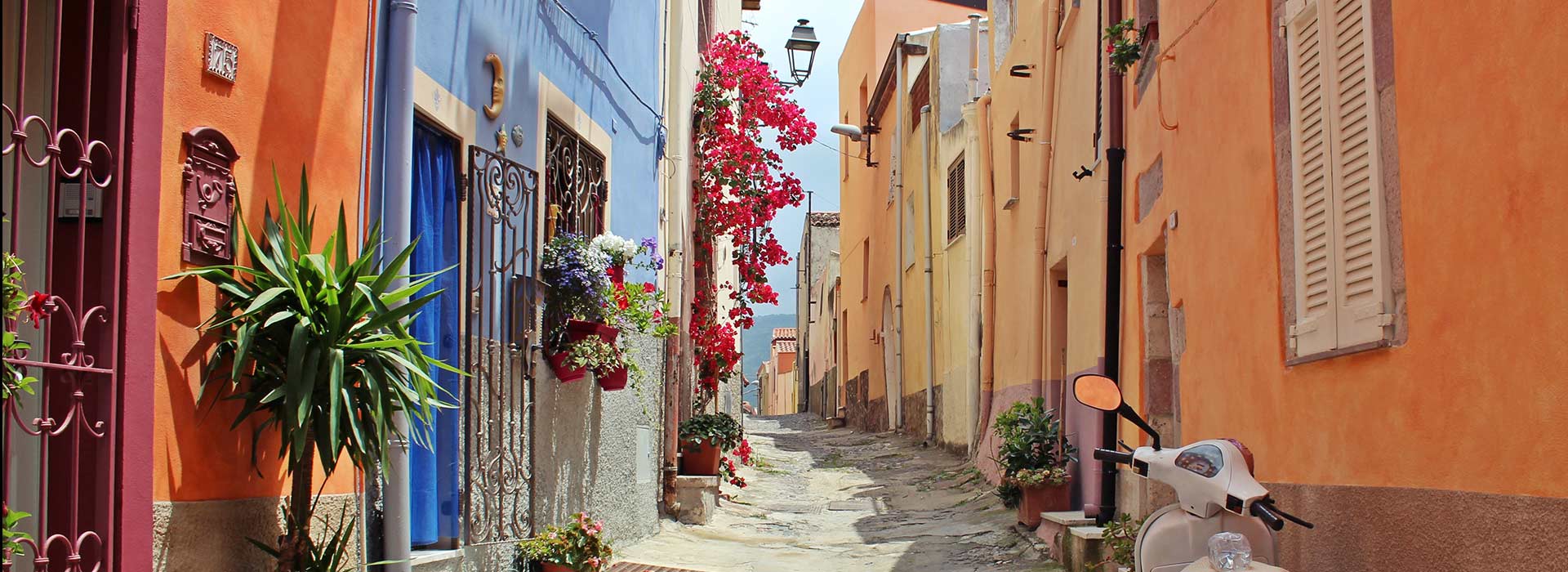
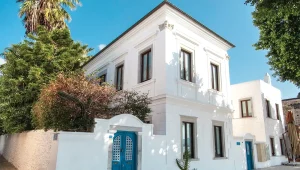
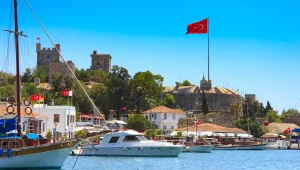
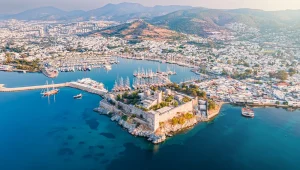
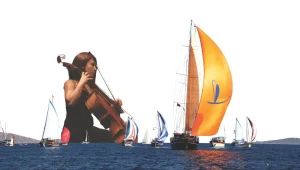
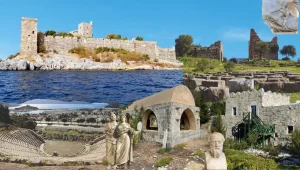
Sorry, the comment form is closed at this time.